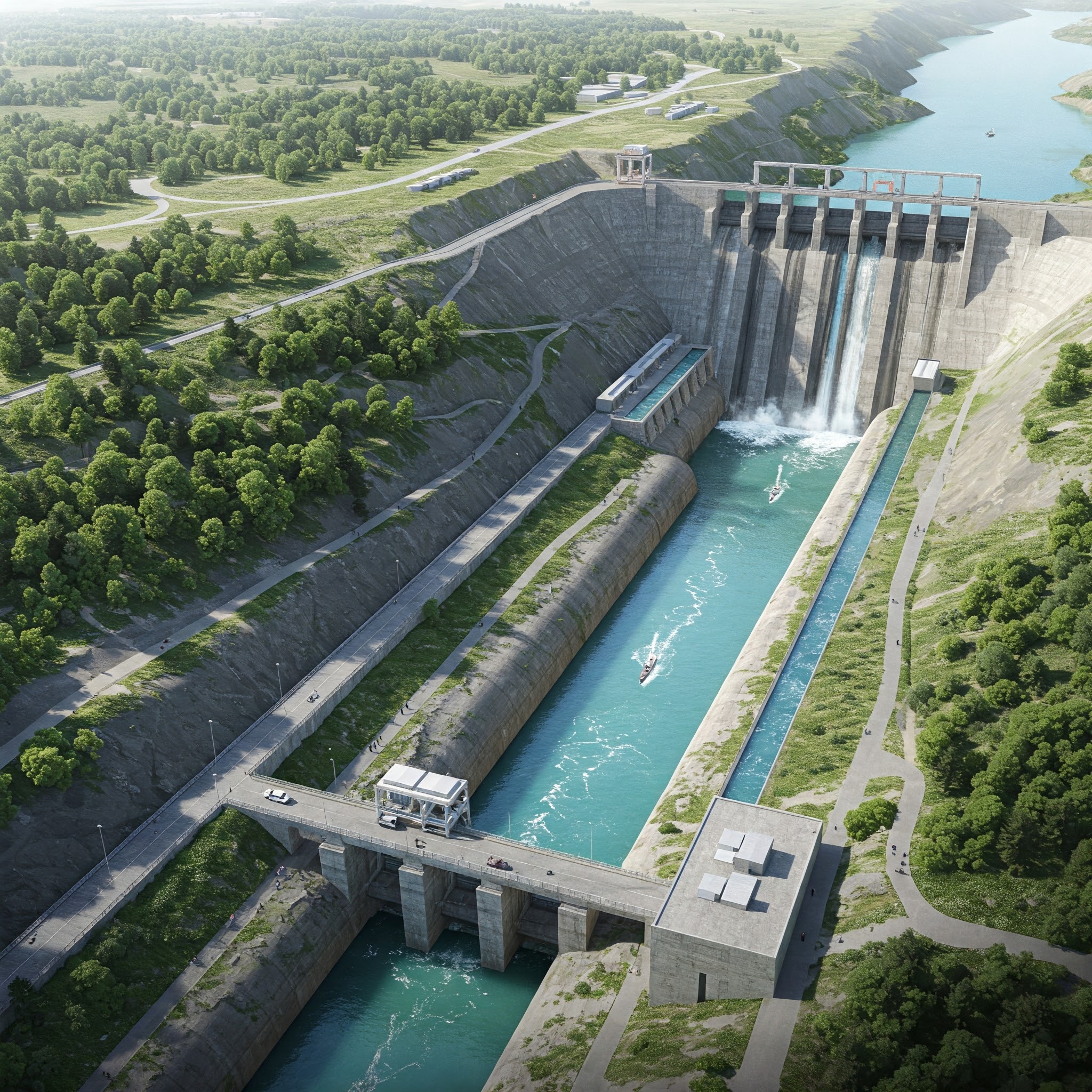
A Vi
Tale of Loss and a Vision of Hope
I I grew up with tales of a once-vibrant port, a bustling hub of trade and life. Lakhpat, nestled in the Kutch region, stood proudly at the mouth of the Indus River. Its prosperity was intrinsically linked to the life-giving waters that flowed into the Rann of Kutch through here. The name Lakhpat means ‘the precious lands’ was true to its zenith. Then, in 1819, the earth shuddered. A massive earthquake struck, and the course of the mighty Indus shifted westward, abandoning Lakhpat. The lifeline of the village withered, leaving behind silent stones and a poignant reminder of nature’s power to both bestow and retract.

AI generated image of Lakhpat, Gujarat with and without the Indus river
Yet, within this historical narrative lies a powerful lesson: the destiny of a region can be profoundly shaped by the flow of water. Today, as we contemplate the future of the Indus waters, with India unilaterally deciding to suspend the Indus Water Treaty (IWT) we stand at a similar precipice. The potential diversion of these waters to India presents not just a solution to our growing water crisis but a unique opportunity to engineer a climate and disaster-resilient future for our northern and western states. Nature, in its own dramatic way, has presented Indian engineers and scientists with a challenge – to build the world’s largest and most advanced water management system, one that not only quenches our thirst but also fortifies us against the vagaries of a changing climate.
This isn’t merely about diverting water; it’s about reimagining our water infrastructure for the 21st century. It’s about building systems that are not just conduits but lifelines, capable of withstanding extreme weather events, recharging our precious groundwater, and even serving as arteries of commerce.
Key Objectives of This Visionary Policy:
- Addressing Water Scarcity: To provide a sustainable and reliable source of water for the chronically water-stressed regions of northern and western India, ensuring access to drinking water, irrigation, and industrial needs.
- Groundwater Recharge: To strategically divert and channel Indus waters to identified river basins and aquifers, actively replenishing depleted groundwater tables and enhancing long-term water security.
- Climate Change Resilience: To design and construct dam and canal systems that are resilient to extreme weather events such as intense rainfall, cloudbursts, and prolonged droughts, mitigating flood risks in some areas while ensuring water availability during dry periods.
- Disaster Mitigation: To incorporate advanced monitoring and control systems within the water infrastructure to provide early warnings for potential floods and other water-related disasters, enabling timely evacuation and minimizing damage.
- Inland Waterways for Transportation: To integrate navigable canals into the water diversion network, creating efficient and cost-effective inland waterways for the transportation of goods and passengers, boosting regional economies and reducing reliance on road and rail networks.
- Economic Growth and Job Creation: To stimulate economic activity in the recipient regions through enhanced agricultural productivity, industrial development, and the creation of jobs in the construction, operation, and maintenance of the new water infrastructure.

River Basins for Potential Diversion and Recharge:
The Indus River system has several tributaries that could potentially be channeled towards water-scarce regions in India. Strategic planning would be crucial to identify the most feasible and beneficial routes, considering topography, existing river systems, and environmental impacts. Potential river basins that could benefit include:
Key Objectives of This Visionary Policy:
- Ghaggar-Hakra River Basin: This ancient river system, now largely seasonal, could be revived and augmented with Indus waters to recharge aquifers in Haryana, Punjab, and Rajasthan.
- Yamuna River Basin: Augmenting the flow of the Yamuna could help alleviate water stress in Uttar Pradesh, Delhi, and Haryana, supporting irrigation and urban water needs.
- Rajasthan Canal (Indira Gandhi Nahar Pariyojana) Command Area: Enhancing the water supply to this existing canal system could further expand irrigation and provide drinking water to arid regions of Rajasthan.
- Smaller Tributaries and Internal Drainage Systems: Carefully planned diversions could also recharge local aquifers and support smaller rivers and internal drainage systems within Punjab, Haryana, Gujarat, and Rajasthan.
Key Potential Risk Areas That Must Be Considered:
While the potential benefits are significant, this ambitious undertaking is not without considerable risks that demand meticulous planning and mitigation strategies:
- Ecological Impacts: Large-scale water diversion can have profound ecological consequences in both the source and recipient regions. Thorough environmental impact assessments are crucial to understand and minimize potential damage to river ecosystems, biodiversity, and downstream environments (including the Indus delta).
- Geopolitical Implications: Unilateral action on the Indus waters could have severe repercussions on India’s relationship with Pakistan, potentially leading to diplomatic tensions and conflicts. International negotiations and agreements would be paramount.
- Financial Costs: Building the “world’s largest” water management system would involve immense financial investment. Careful economic planning, funding mechanisms, and cost-benefit analyses are essential to ensure the project’s viability.
- Engineering and Technical Challenges: Designing and constructing climate and disaster-resilient dams, canals, and navigation systems on such a scale presents significant engineering and technical hurdles. Expertise, innovation, and rigorous quality control will be critical.
- Social and Displacement Issues: Large-scale infrastructure projects can lead to displacement of communities and social disruptions. Fair compensation, resettlement, and inclusive development strategies must be integral to the planning process.
- Sediment Management: The Indus River carries a significant amount of sediment. Effective sediment management strategies will be crucial to prevent siltation in canals and reservoirs, ensuring the long-term functionality of the system.
- Water Quality: Maintaining the quality of the diverted water will be essential for its intended uses. Pollution control measures and water treatment facilities will need to be integrated into the system.
- Inter-State Water Sharing: Within India, equitable distribution of the diverted Indus waters among beneficiary states will require careful planning and agreement to avoid future water disputes.
A Future Forged by Water:
The potential to harness the Indus waters for the prosperity and resilience of India’s northern and western states is a monumental opportunity. By learning from the lessons of history, like the tale of Lakhpat, and by embracing innovation and responsible planning, we can transform a potential crisis into a catalyst for growth and stability. Building climate and disaster-resilient water infrastructure is not just an engineering challenge; it’s a commitment to the future, a testament to our ability to learn from nature and build a more secure and prosperous India. The universe has indeed presented a unique opportunity – let us seize it with vision, responsibility, and unwavering determination.
This blog was originally published by A Vi here





